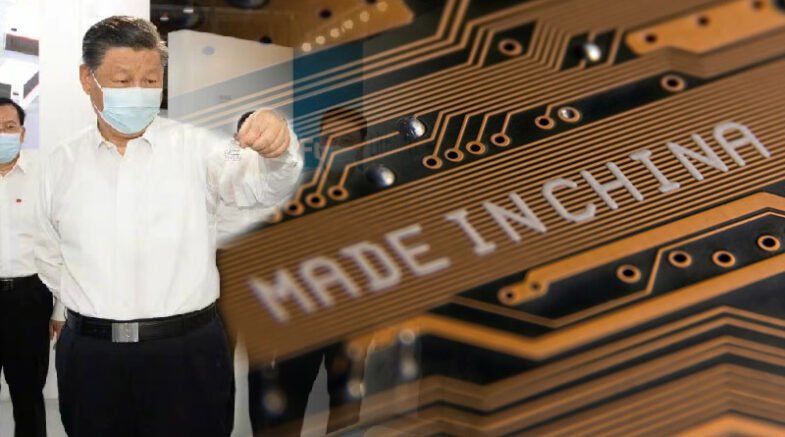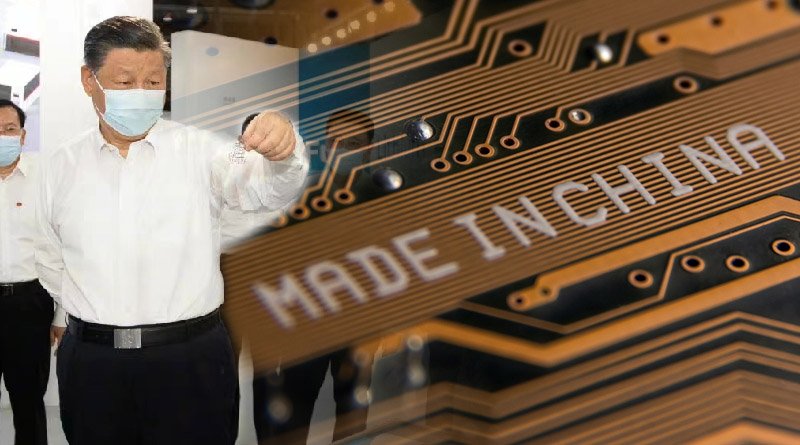China should produce “usable, desirable, and needed technology that can be put into application sooner rather than later,” according to Denis Simon.

China has started a major restructuring of its research organisations in an effort to achieve “self-reliance” in sci and tech in the face of tighter restrictions on access to key technologies and a more competitive global scientific landscape.
A plan that will refocus China’s Ministry of Science and Technology (MOST) on important initiatives to meet top national priorities was approved by the National People’s Congress last week. Additionally, it establishes a strong Central Science and Technology Commission that will enforce uniform regulations across all government agencies and hold them responsible for achieving their goals.
The revamp, according to Richard Suttmeier, a political scientist who is now retired from the University of Oregon, represents “the most radical change to [China’s] innovation system since the end of the Mao era,” though many specifics have not yet been made public.
China should produce “usable, desirable, and needed technology that can be put into application sooner rather than later,” according to Denis Simon, a China science policy expert at the University of North Carolina, Chapel Hill. Although funding for basic research has increased significantly, the plan does not disparage it.
The actions are partly a reaction to recent American decisions to limit China’s access to advanced computer chips and manufacturing machinery. The Netherlands and Japan are being pressured by the United States to enact comparable bans.
This prompted Chinese President Xi Jinping to bluntly state that China is facing a U.S.-led strategy of “containment, encirclement, and suppression” that poses “serious challenges for China’s development” at a meeting of business executives on March 6th, according to Xinhua, the official state news agency.
Numerous scientists in China concur. Because of these restrictions, China must indeed become more independent, according to Mu-ming Poo, director of the Institute of Neuroscience at the Chinese Academy of Sciences. The Chinese leadership’s push for self-sufficiency “seems like a natural response,” according to Emily Weinstein, an analyst at Georgetown University’s Center for Security and Emerging Technology.
According to Simon, a former executive vice chancellor at Duke Kunshan University in China, the U.S. sanctions have compelled Chinese officials to address enduring and more serious issues in the nation’s research environment.
The Chinese government has gradually increased the amount of authority and funding given to MOST, a large organisation that manages numerous research projects, in order to “build an innovation economy.” However, Simon claims that “leadership has not been impressed” by the outcomes.
One problem is that although MOST set research priorities, allocated money, and evaluated projects (including its own), it had limited control over how other ministries conducted their research.
That led to inefficiencies and sometimes lacklustre results, analysts have said. The new plan gives agencies greater responsibility for research within their mission areas and creates a more independent mechanism for evaluating results.
Some of MOST’s current programs, for example, will be moved to mission-focused agencies. The Ministry of Agriculture and Rural Affairs will take over agricultural research, and the Ministry of Industry and Information Technology will take responsibility for managing industrial development zones. Such reassignments “seem like a rational response to a changed environment,” Suttmeier says.
The new sci and tech commission for self reliance, meanwhile, will have the power to set governmentwide policies and evaluate results. It will sit at the loftiest levels of China’s government, directly under the Communist Party of China (CPC), giving it substantial political heft.
The commission’s size and composition remain uncertain, but it will “most likely have Xi as the chair,” says Cong Cao, a science policy scholar at the University of Nottingham’s campus in Ningbo, China. The involvement of the CPC signals that “science and technology have become one of the [nation’s] most critical issues, given rising tensions between China and the U.S.,” Cao says.
MOST is likely to retain an important role as the body that will execute the commission’s policy directives, Suttmeier says.
Notably, MOST will still manage China’s National Natural Science Foundation, which provides grants to small groups of researchers working on fundamental topics. “China has not been quiet about its struggles to improve in more basic and foundational science,” Weinstein says.
China’s total R&D expenditures rose 10.4% in 2022 to 3.1 trillion yuan ($448 billion), with support for basic research up 7.4% to 195.1 billion yuan. Spending on basic research has doubled in five years, and China has set a goal of raising that ratio to 8% by 2025. Even if China meets that goal, it would still lag behind the United States, where 17% of total research spending went to basic work in 2019.
According to Zhiqiang Shen, director of the Shanghai Astronomical Observatory, China is likely to set a new and higher basic research spending target for 2035. Although no precise number has been established yet, he says, “I am quite confident that China will strengthen basic research in general.”
He continues by saying that the rise in scientific research funding in China has already “ushered in unprecedented opportunities” in astronomy and other fields where an immediate financial reward is unlikely.
Some believe that the reorganisation will give China’s diverse network of research institutions a chance to demand greater autonomy. IHEP director Yifang Wang says, “I am calling on the government to give more money to organisations like the Institute of High Energy Physics [IHEP] so that we can decide what to do. In spite of the focus on independence, he also predicts that “international collaboration will not be affected.”
For instance, international workshops on the proposed Circular Electron Positron Collider, which were put on hold due to the COVID-19 pandemic, drew participation from groups from other nations. According to Wang, IHEP will soon resume hosting these workshops.
The reorganization of Chinese research is likely to face challenges, such as individual ministries setting their own agendas and limited private sector investment.
Simon believes the effort will help focus resources, improve cooperation between national labs and industry, and create better evaluation mechanisms. However, it remains to be seen if the new arrangement can produce a better scorecard when China places big bets in the race for greater sci and tech self-reliance.
